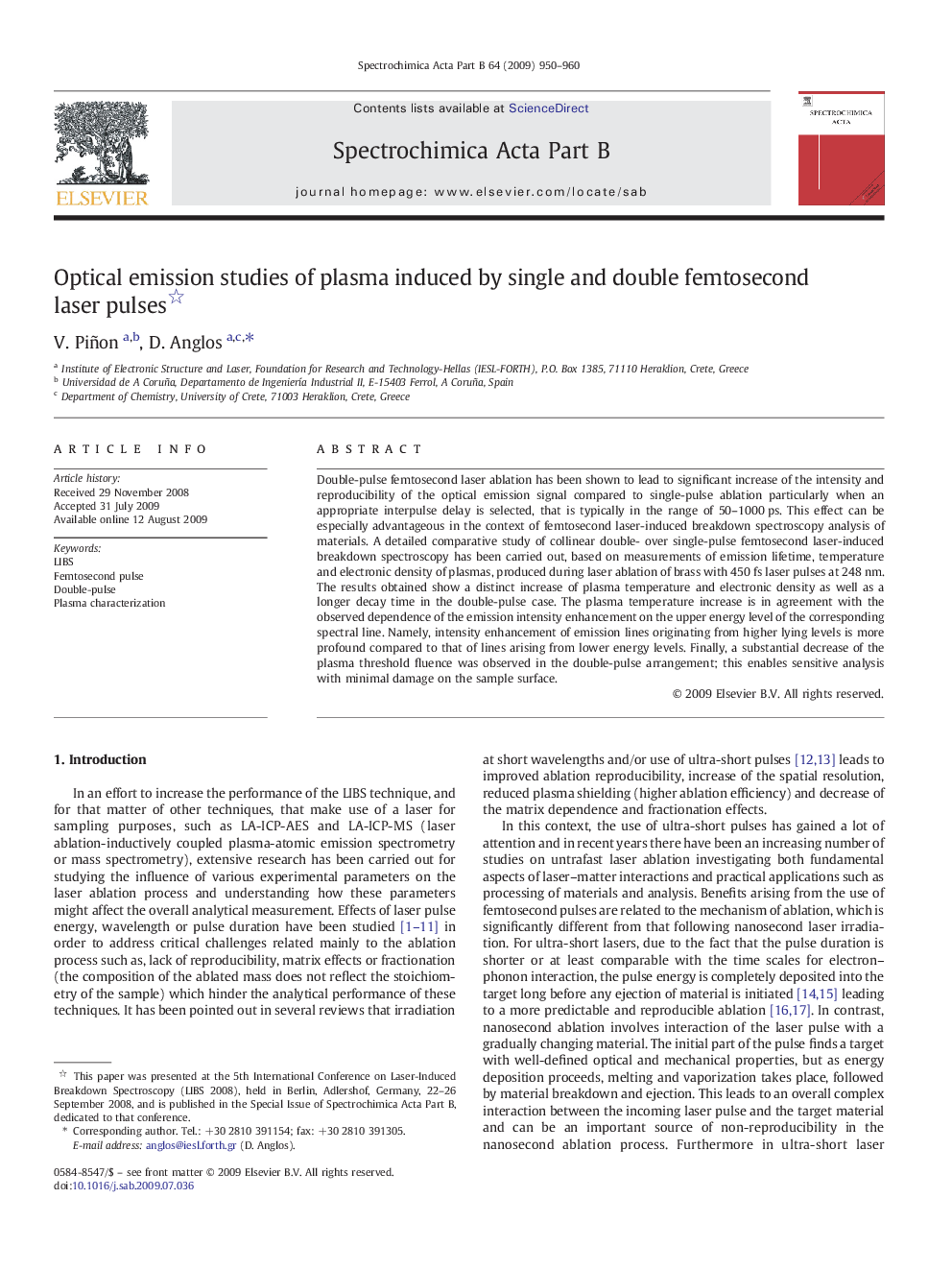| Article ID | Journal | Published Year | Pages | File Type |
|---|---|---|---|---|
| 1240788 | Spectrochimica Acta Part B: Atomic Spectroscopy | 2009 | 11 Pages |
Double-pulse femtosecond laser ablation has been shown to lead to significant increase of the intensity and reproducibility of the optical emission signal compared to single-pulse ablation particularly when an appropriate interpulse delay is selected, that is typically in the range of 50–1000 ps. This effect can be especially advantageous in the context of femtosecond laser-induced breakdown spectroscopy analysis of materials. A detailed comparative study of collinear double- over single-pulse femtosecond laser-induced breakdown spectroscopy has been carried out, based on measurements of emission lifetime, temperature and electronic density of plasmas, produced during laser ablation of brass with 450 fs laser pulses at 248 nm. The results obtained show a distinct increase of plasma temperature and electronic density as well as a longer decay time in the double-pulse case. The plasma temperature increase is in agreement with the observed dependence of the emission intensity enhancement on the upper energy level of the corresponding spectral line. Namely, intensity enhancement of emission lines originating from higher lying levels is more profound compared to that of lines arising from lower energy levels. Finally, a substantial decrease of the plasma threshold fluence was observed in the double-pulse arrangement; this enables sensitive analysis with minimal damage on the sample surface.
